How often to water peppers in a greenhouse: a guide to proper watering for high yields
Pepper is a heat-loving and capricious crop, so it is not easy for gardeners living in areas with a cold climate to grow it. It is important to create optimal growing conditions, apply fertilizing correctly and in the right amount, and most importantly, choose the right watering regime.
In this article we will tell you how often to water peppers in a greenhouse and what gardeners who grow this crop in a greenhouse should remember.
Growing conditions
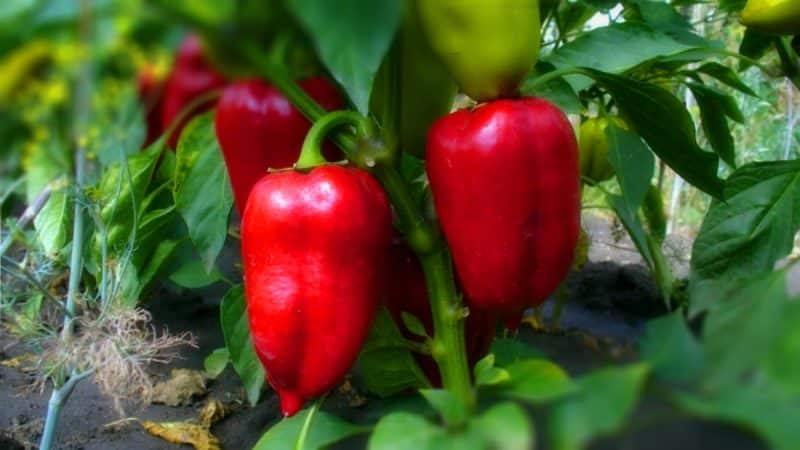
Before moving on to the issue of watering peppers in a greenhouse, it is worth finding out the basic growing conditions.
In open ground, vegetables will grow only in areas with a warm climate. In other regions of our country, peppers are grown in greenhouses. Recommended air temperature: +18…+25°C.
Since fruits love light, the greenhouse material must be translucent. Otherwise, you will not get the harvest you expect.
Use the necessary fertilizers (mineral and organic) for growth. It is good if the soil contains organic substances such as black soil or compost.
Don't forget to follow the irrigation rules.
Reference. Bitter and sweet (Bulgarian) fruits require the same conditions of maintenance and watering.
Rules for irrigation in a greenhouse
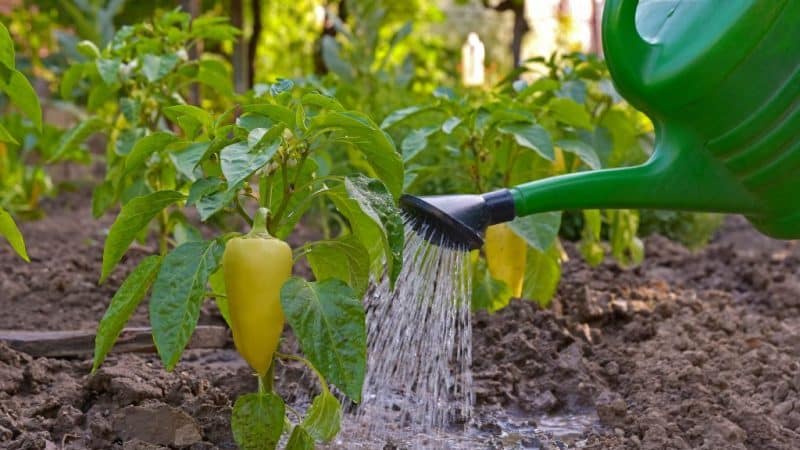
Pepper is a vegetable crop that prefers moist soil. If the soil dries out, flowers fall from the plant, resulting in a decrease in yield.
Irrigation timing
Pepper loves water.The frequency and timing of irrigation depend on the climatic conditions of a particular area.
Many people believe that during the rains there is no need to water peppers. This opinion is wrong. Even during this period, plants need high-quality irrigation, unless, of course, prolonged rainfall occurs in the area.
It is recommended to water the plants in the evening, then leave the greenhouse open for an hour for ventilation.
Water requirements
One of the common mistakes novice gardeners make is watering peppers with cold water. It is strictly prohibited to water the plant with such water. The water temperature should be 23-25°C.
It is recommended to fill the tank with water, leave it to bask in the sun, and then water the plants.
Irrigation frequency
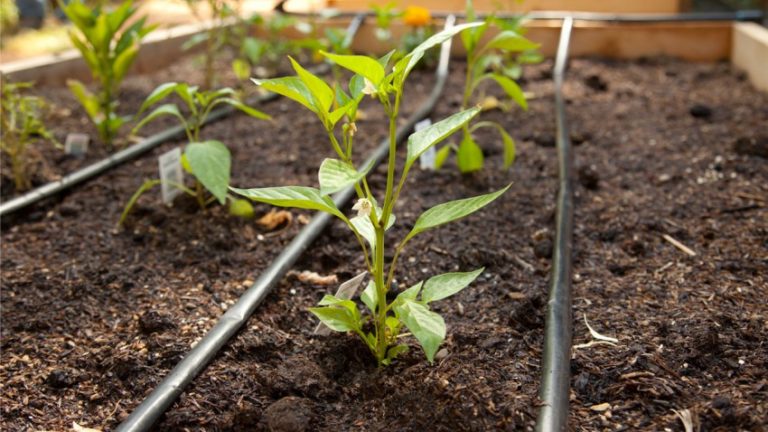
As soon as the first shoots appear on the seedlings, the plant must be irrigated every 2-3 days.
After planting the seedlings in the greenhouse, water it abundantly.
Reference. Abundant irrigation should not harm the bush. Be careful not to let the plant squint while watering.
After this, watering is repeated every other week.
Despite all the recommendations for watering, pay attention to the soil. It should always be moisturized. If the soil is dry, the plant will grow poorly, the leaves will turn yellow, and the fruits will lose their juiciness.
Also make sure that the soil is not waterlogged. This is bad for the plant and can lead to rotting of the basal stem or rhizome.
Features of irrigation under different conditions
Depending on the growth period of the plant, the frequency of watering varies:
- After planting the seedlings in the greenhouse. During this period, the plant does not need frequent watering. However, if it is hot outside, the plants need to be watered every day or every other day.If there is no particular heat during the day and it is cool at night, then water the peppers once or twice a week. Irrigate at the rate of: 10 liters of water per 1 m² of soil.
- Bloom. During this period, the plant especially needs watering. During flowering, only the root zone is watered. Two waterings per week are sufficient.
- Fruit ovary. During this period, peppers form fruits, the temperature in all regions of the country becomes warm or hot. The plant is watered once every two to three days with an average of 3 liters of water per bush. If the bushes are large, then they will require more water (up to 5 liters per bush).
- Fruiting. During this period, the frequency of watering decreases. It will be enough to water the peppers once every four days.
During hot weather, the plant especially needs watering. In this regard, one bush should require 2-3 liters of water. In such weather, the plant is watered in the morning before sunrise. If the pepper grows in open ground, then any watering method will do.
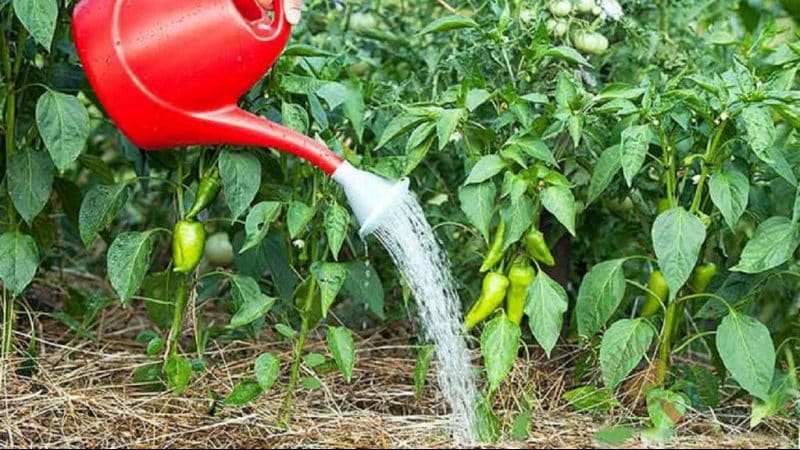
Watering methods
There are several methods for watering peppers:
- manual;
- auto;
- mechanical;
- rain;
- drip.
Each method has its pros and cons. The gardener chooses the best option depending on the conditions in which the peppers grow.
Manual
The manual method of watering is accessible, but the most labor-intensive (watering can, bucket). It is used if special irrigation systems are not installed in greenhouses. Gardeners use the manual method to irrigate small areas of land.
In the greenhouse, peppers are watered by hand in the morning or evening. If the plants are planted in open ground, it is better to water them in the morning. This will prevent the sun from burning the bushes.
Reference. Peppers are watered strictly under the bush or by sprinkler irrigation.
Auto
The automatic watering method is convenient because it does not require constant supervision by the gardener.
The system is fully automated and equipped with sensors, thanks to which watering is carried out automatically.
This irrigation method is one of the most expensive. Few summer residents can afford it. It is necessary to have constant sources of electricity and water supply. You will also need to lay pipes that can withstand any water pressure.
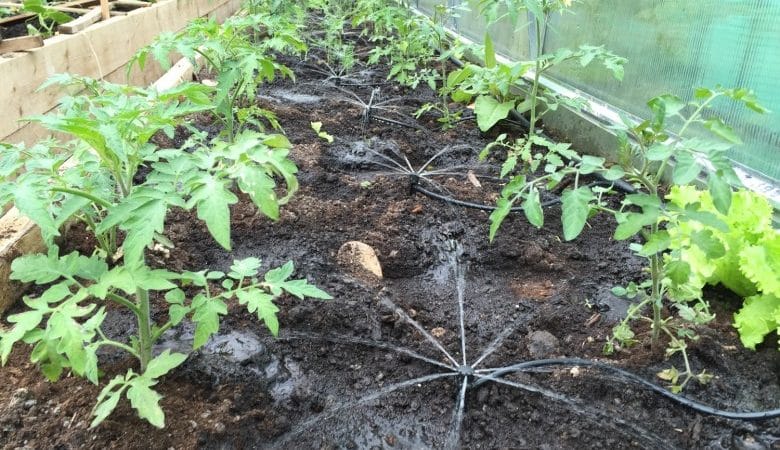
Mechanical
The mechanical irrigation method is convenient because it does not require constant human presence. For this, a special system is purchased, and the gardener himself regulates the duration of watering. In this case, we must not forget that you will have to manually turn the system on and off.
Sprinkler
The sprinkler method simulates rain. But this consumes a large amount of water. It cannot be used during strong sunshine and during the flowering period. In a greenhouse it is also irrelevant, as it creates strong humidity.
Drip
Gardeners recommend using the drip method to irrigate peppers. Thanks to this method of irrigation, water flows directly to the root. If you use fertilizer, it will be much more effective at reaching the plant, excluding the leaves and stem.
The drip method involves placing pipes with small holes near the bushes on the soil surface, through which water will flow to the plant. Depending on the soil, the distance between the holes varies, on average 15-25 cm.
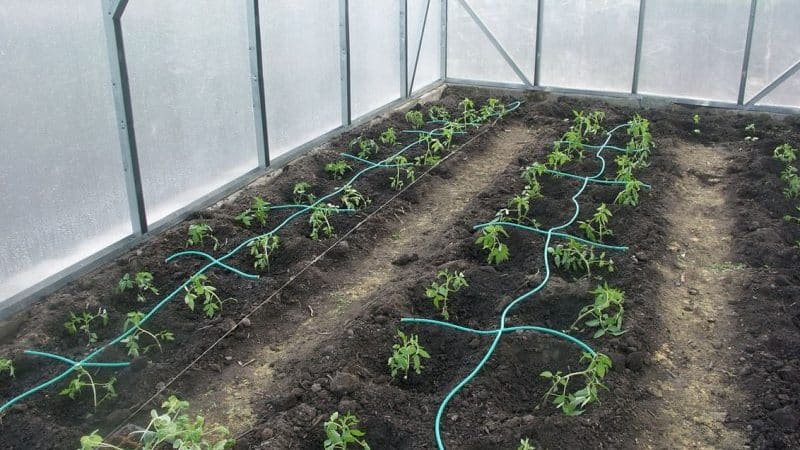
Nuances of watering depending on the type of greenhouse
Caring for peppers in greenhouse conditions largely depends on the material of the greenhouse.
Polycarbonate
Polycarbonate greenhouses are one of the most popular types of greenhouses.They are durable, have excellent thermal insulation and light transmission, which is especially necessary for peppers.
The soil of peppers should always be moist, but not oversaturated. A polycarbonate greenhouse must be constantly ventilated to regulate air humidity.
For 20 pepper bushes, use about 10 liters of water.
Important! If you have a mechanical irrigation system, do not use soft pipes. They may burst if the pressure is strong.
Peppers stop watering when the fruits ripen. This occurs two weeks before harvest. Reducing the amount of moisture helps the peppers ripen faster.
Do not grow different types of peppers in the same greenhouse: bitter and sweet. This proximity will lead to a change in the taste of the peppers - all the fruits will be bitter.
In a polycarbonate greenhouse, it is recommended to grow peppers through seedlings, despite the fact that the soil warms up faster there. But only in this way will you get a full harvest.
In a greenhouse under film
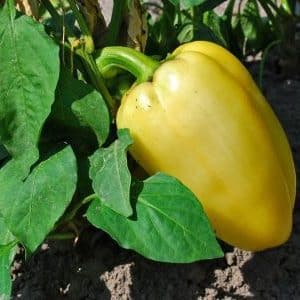
As with watering in a greenhouse, the soil in the greenhouse should always be moist. Regular and moderate watering is the key to proper plant development.
Overwatering the plant can lead to mold and rot. The soil temperature must be at least 15°C. Peppers are planted in holes filled with water. 2 liters of water are poured into each of them.
After planting the plant in the greenhouse, it must be watered well again. Water with settled warm water at the root of the plant. Watering should be regular, but not excessive.
Hot and sweet peppers should also not be planted in the greenhouse. The second type may acquire a bitter taste.
What are the dangers of overwatering?
Many novice farmers believe that if peppers need frequent watering, there is no harm in overwatering them. Especially if it’s hot or dry outside. This is a wrong opinion.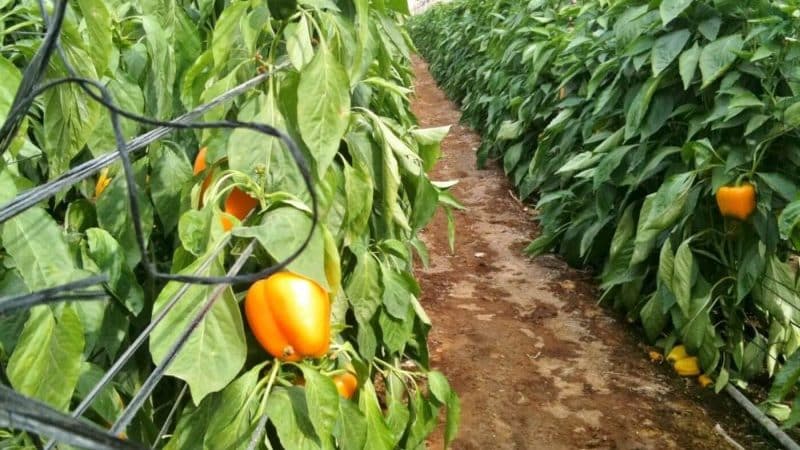
Overwatering the peppers will not harm you only if you water them at dawn. In this case, the water will be absorbed before noon and the plant may not be damaged.
If you overwater peppers when the sun is shining brightly, the damage to the plants will be enormous. Why is this happening? Drops of water remain on the stem and leaves, and acquire the properties of a magnifying glass. The plant receives severe burns.
Since water cannot evaporate quickly, a crust forms on the surface of the earth, which subsequently cracks. The roots dry out and the plant may die.
Excessive watering inhibits plant development. It becomes lethargic and grows slowly. Starts get sick, flowers fall off, ovaries do not form.
Tips and tricks
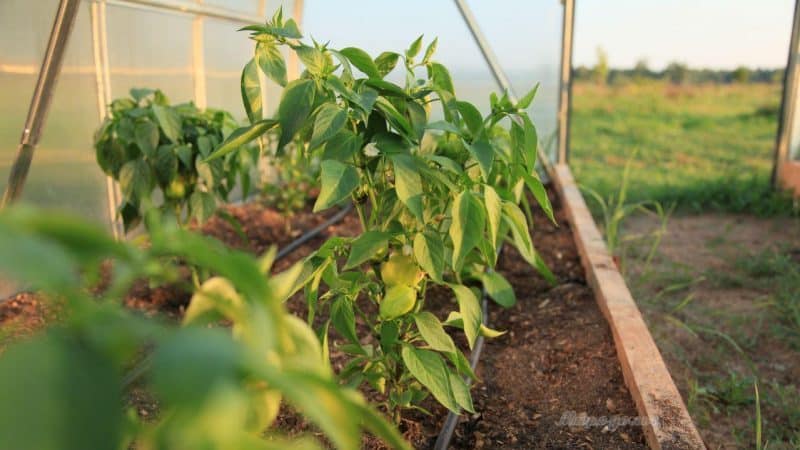
Useful tips from experienced farmers:
- It is advisable to water the pepper with settled water at room temperature.
- When plants stop developing fully, add mineral and organic fertilizers to the water.
- Fresh manure is an excellent fertilizer for crops. It is diluted in water. Ratio: 1 part manure to 10 parts water. The solution is watered into the furrows between the plants.
- Double superphosphate and urea are good watering agents. For 10 liters of water, add 10 g of urea and 20 g of superphosphate. The bush takes 0.5 liters of water.
- Peppers need to be tied up, as the stems are fragile and cannot support heavy fruits. In addition, if watered incorrectly, plants may fall.
- It is better to use plastic pipes for irrigating peppers. They are installed along the beds.Thanks to this, water is used rationally and goes directly to the root zone, which allows the plant to develop better.
- Do not use tap water. If there is no other one, it should stand for 24 hours.
- Hard water needs to be softened. To do this, pour half a glass of wood ash into a bucket of water.
- Rain and melt water at a temperature of 22-23°C are ideal for irrigation.
- If the soil is sandy, then the peppers are watered much more often.
- In a greenhouse, vegetable crops need more regular and frequent watering.
Read also:
How to water cucumbers correctly.
Conclusion
Pepper needs a special approach - regular watering is extremely important for it. Use settled water at 23-25°C. It is recommended to water the plant either in the morning or in the evening, and then open the doors in the greenhouse for an hour for ventilation.
During hot weather, the plant especially needs irrigation. One bush in such weather should require 2-3 liters of water. Excessive watering inhibits the development of vegetable crops. She becomes lethargic and grows slowly. It starts to hurt, the flowers fall off.